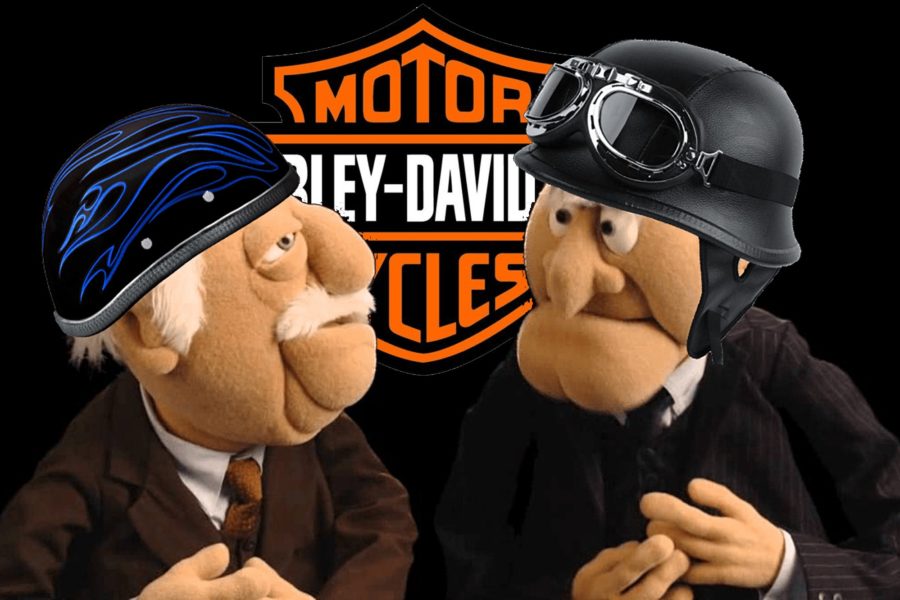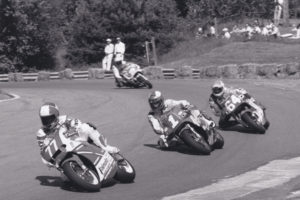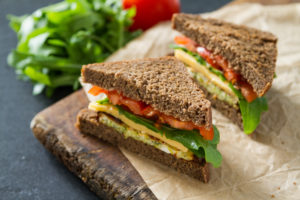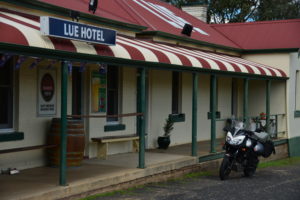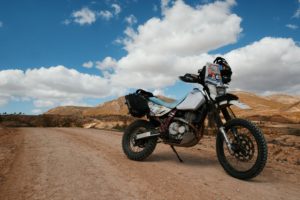Here at ADVrider’s virtual HQ, we endless debate what we would do if we were made CEO of Harley-Davidson. We all want H-D to succeed both as a motorcycle manufacturer and specifically as an Adventure Motorcycle manufacturer. I asked our Senior Writers Mike Botan and Zac Kurylyk to let us know what they would do if they became CEO and their thoughts are below …
I asked Mike Botan, Senior Writer ADVrider
I’ve been asked more than once what I would do if I suddenly found myself asHarley-Davidson’s CEO. What would I do to attract the ADV community (and other riders) to my brand?
Thinking like a CEO
Well, if it is up to me, we’re going to have to change the way Harley-Davidson thinks and does business. The world is changing, and Harley is not. In fact, it seems they’ve doubled down on staying the course that has brought them to its current sales and financial situations. So the first order of business is to make Harley agile. Not just in cutting employee count or increasing the speed of decision making as current CEO Zeitz says, but in the way the MoCo thinks about its current and, more importantly, its future customers. Emphasis has to be placed on attracting new blood into the fold. So how do we do that? Read on.
Emphasizeallof Harley’s history.
Harley has been around for more than 100 years (nearly 120 years). They’re not some resurrected brand name. Harley-Davidson has been in continuous operation since then. That’s not something that other motorcycle existing manufacturers can claim. We need to make Harley stand apart from other motorcycle companies. We need to show people how much we’ve learned during that timeframe. From bicycles with engines mounted to them to electric motorcycles that perform “and are green for the environment.” Emphasize periods and technologies where Harley has led the way. Show them off and emphasize what Harley intends to do in the future. Demonstrate that Harley isn’t stagnant but changing with the timesandgetting ahead of them. We’re going to use our experience to make better and more fun motorcycles.
Scrap the cowboy/rebel image
Next, for the North American market at least, lose the current cowboy, rebel, image. If Harley is to grow, we need more than our current core customers. For other parts of the world where the US may be seen as the land of cowboys and rebels, keep some of the images but don’t make them the star of the show. Start moving towards making the motorcycle the most important factor, not the image.
Develop motorcycles that excite more diverse and younger riders
Now that we are moving more towards making the motorcycle the star, not the “lifestyle,” start developing motorcycles and technology that press young people’s buttons. It also means that we will have to address the currently hyped danger of riding motorcycles. We will have to show how Harley’s bikes integrate into daily life and make new rider’s lives easier and more fun.
We’re going to have to show our motorcycle’s utility, eco-footprint, and ease of use. We’ll need to bring new riders bikes that will fit their current lifestyle, not a perceived one. That means producing a lineup of bikes that run a wide range of engines/motors, physical sizes, capabilities, and prices. Harley doesn’t need a 100 model lineup with slight differences. It needs a smaller lineup with incremental differences in size, capability, price, and technology. Briefly stated, we need to take on our competitors, in all the motorcycling categories, not carve out a small niche and hope to grow it.
As price increases, so should fit and finish, technology, capability, and the things that make a machine more desirable. While the big, expensive V-twin shouldn’t be killed, it should be limited to being a halo product ofone骑士渴望的产品线。,哈利shouldn’t let it become the only product that earns a good profit. Harley will also have to have a halo product in the product lines that sell best. For example, one big ICE V-twin, one electric, one commuter, and one entry-level machine. Each of these categories should have a halo bike where profit is excellent.
Not easy
I note that building an “inexpensive” bike where profit is excellent is difficult, but it’s not impossible. For example, a learner’s bike with inexpensive to produce lifestyle electronics or utility upgrades (e.g., Bluetooth connectivity and places to built into the bike where devices can be safely stored and seen) can be priced higher and with bigger margins than those that don’t.
Since electric motorcycles will happen either by people’s choice or government regulation, Harley will need a line of electrics. Not just a $30K electric, but a range of electrics starting with the inexpensive kid’s bikes that they already have, (to create an early brand loyalty), commuters, nakeds, sports, all the way to its halo products. Does the bigger range of significantly different (not different bits and bobs) motorcycles sound familiar?
Yup, Harley’s former CEO Matt Levatich and his “More Roads To Harley-Davidson” plotted this very course and ended up unceremoniously dumped from this CEO perch. And you may ask why would I suggest that Harley implement it again. Well, it’s because I think that Levatich’s plan was a good one. Unfortunately, he was too slow in making it happen. That was his key and ultimate failing.
Harley is a public company “burdened” by Wall Street’s never-ending desire for more revenue and more profit. Harley, under Levatich’s watch, was far too slow in implementing its product line change. Because of this, Harley’s Board of Directors (and Wall Street activist investors) took the reigns and killed off what could have added more horses to pull the company’s revenue and profit wagon.
Under current CEO Jochen Zeitz, employee counts have been slashed, models dropped, and now there are fewer horses to pull Harley’s wagon team. While the cost reductions have increased Harley’s profitability and made Wall Street investors happy in the short term, it’s done nothing to grow the Harley-Davidson brand, and that’s a shame.
Bring in fresh blood and thinking
Since Harley does not appear to be changing with the times, it needs to bring in some fresh blood. Employees are the engine of what makes a company grow. Executives may make major decisions, but they do not in themselves create revenue and hence profit.
哈雷需要一些新的思想家。有一个人vision of what the world (not just North America) want in powered two-wheel products. And to get those kinds of people, Harley will have to incentivize them to come to work for the brand and stay with the brand.
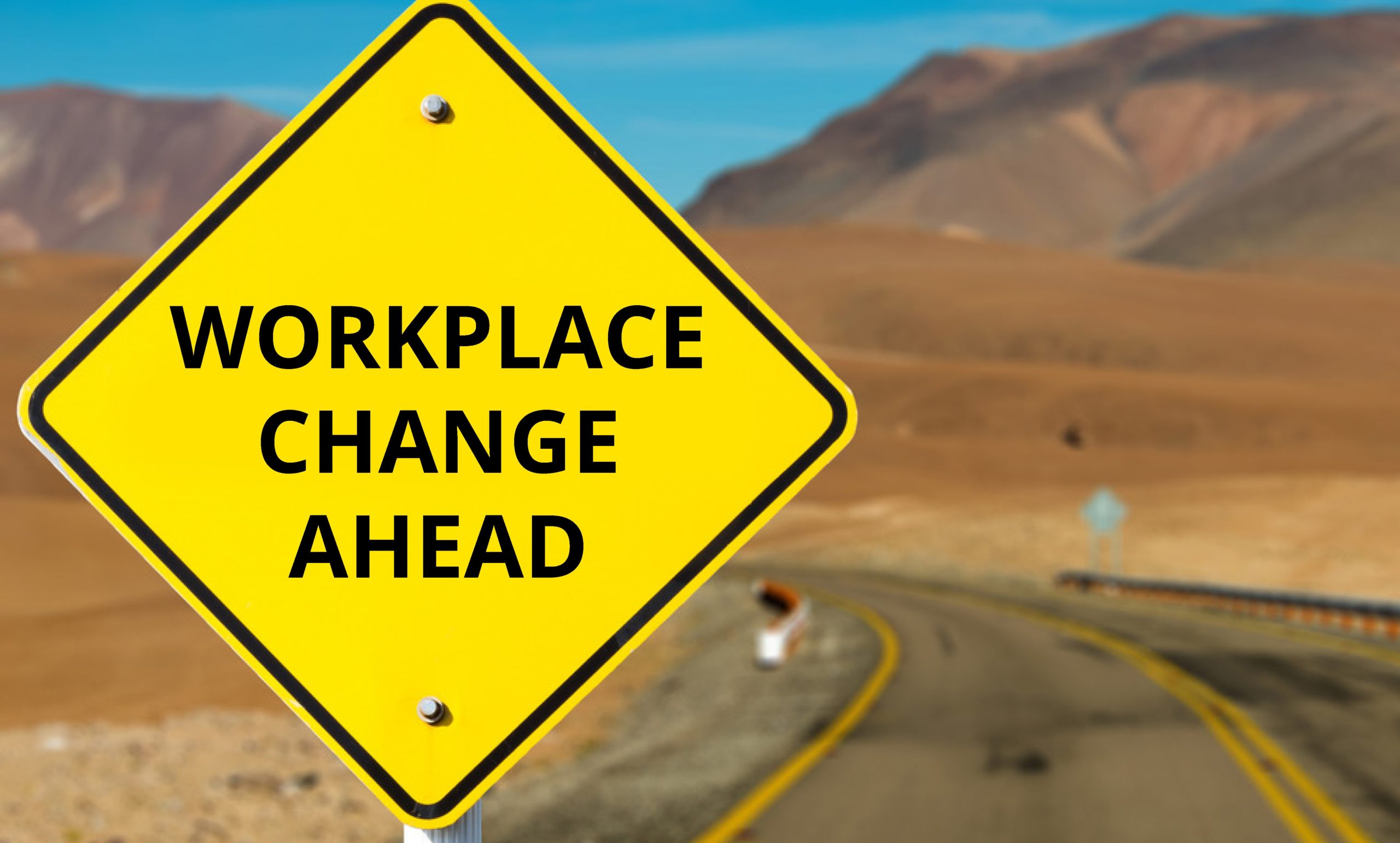
Image credit: twentytwo.co.nz
Let’s face it. Cutting employee costs can, in the short term, increase profit. But beyond that, the benefit of a lower employee cost will soon be lost as products and thinking grow stagnant and employee levels sneak back to their original levels.
Harley has to lose the big V-twin ethos and start thinking about attracting new riders over a larger range of potential customers. Fresh blood with new visions will help make this happen. New blood can create conflict and is not easy to manage, but companies with good executives should be able to sort the wheat from the chaff and make good decisions in line with helping the company grow.
Time equals money
Finally, all of the above is going to cost money—lots of it. Levatich spent a bunch on his More Roads To Harley Davidson plan. And he did plant the seeds to grow a new crop of bikes to increase the brand’s overall desirability, not just the desirability of a few big profit models as Zeitz is presently trying to accomplish.
如果公司激励employees (in both the workplace and financially), gains their buy-in, and authorizes appropriate changes quickly, changes to Harley’s present stagnant course will be accelerated.
We’re going to have to agree upfront that the company will have to spend more money getting there. Most importantly, we are going to have to show some positive results in three years or less. Not five years or ten years down the line. This means we will have to leverage the money and change that Levatich paid for and started.
We’re going to have to build a believable strategic plan and product lineup showing how we’re going to enhance our current market and grow into others. A product lineup that meets world needs and desires is the key. A trimmed down V-twin cruiser lineup won’t accomplish this. But a lineup with a range of machines that meet differing needs and rider groups will.
Ultimately, as a public company, we’ll have toearnthe board of directors and investors’ trust in adopting this plan. Saying that we’re going to build the most desirable motorcycles in the world to a smaller group of people won’t gain their long term trust. Nor will it line their pockets over time.
It will make them smile for a short time, and then they will grow impatient with stagnant revenues and the same profit. They are always going to want more. We have to convince these people that long term viability will put more money in their pockets than a short term gain from a slowly dying company.
In summary
None of the above will be easy. And, it will cost time and money. But unless we want Harley to be a pinnacle of motorcycle for only a few well-heeled individuals, we’re going to have to change. We’re going to have to adjust to the world and make them our customers. If we don’t, we may be “rescued” by an offshore company, or die a slow, agonizing corporate death.
Zac Kurylyk, Senior Writer ADVrider
My Five steps for Harley-Davidson to achieve success
I think a lot of the naysayers aren’t giving Harley-Davidson enough credit these days. Building an all-new adventure bike from scratch is a very ambitious undertaking, and I think ADVers should do less sneering at the Pan-America, and at least admit the MoCo is trying to do something different.
But, it will take more than “the old college try,” if Harley-Davidson is serious about success in the ADV segment. The same old, same old ideas will sell a few bikes to existing H-D customers, but Harley-Davidson needs to think things through carefully if it intends on adventure bike sales success. Here are my thoughts on some moves for the MoCo:
Make a quality product
我不认为这是通常将是一个空间站ue, honestly, as Harley-Davidson has been selling bikes as luxury items for decades now, and done it well. Sure, the technology is outdated, but it is reliable. Even its more recent products, with less years to perfect the platforms, have good reputations. You can buy a LiveWire and expect it to just plain work.
Having said that, once you add in the wear and tear of gravel riding, there will be issues that most Big Twin riders don’t face. I’m going to give Harley-Davidson the benefit of the doubt here, and assume they hired some experienced ADV bike engineers for this thing. Either way, this machine definitely needs to have a reputation for reliability.
Create new customers (and keep them)
Harley-Davidson’s biggest problem, by far, is that it’s been selling to the same customers since the 1990s, and those customers are moving away from motorcycles, and towards assisted living homes. Harsh, but true.
No doubt part of Harley-Davidson’s reasoning behind the Pan America introduction is “Hey, let’s grab some of those BMW/KTM/Honda/etc. riders and get them to buy our adventure bikes, instead of ones built overseas.” And, that will work on some riders. But, I suspect most existing GS riders are brand-loyal and won’t be keen to drop big coin on the Pan America. Why move from a familiar platform, one they’re comfortable with, to something new and unestablished? You see the name “BMW GS,” and you know the bike will more-or-less work. The Pan America badge doesn’t have that effect.
With that in mind, I think if Harley-Davidson wants success in the adventure market, a big part will be creating new ADV riders. Harley-Davidson needs to attract its existing cruiser riders over to the adventure bike scene, but just as importantly, it needs to get people into adventure riding that don’t even currently have a motorcycle license.
Advertise correctly
To create those new customers, Harley-Davidson is going to have to adapt its marketing game. The H-D marketeers of old had bikes like the Breakout, the Fat Bob, and so on. Brash, bare-knuckled advertising is not the key to success for an unproven newcomer in the ADV world.
Instead, Harley-Davidson should do two things, both of which it already does well. Harley needs to play to its heritage. Fact is, Harley-Davidson does have big offroad bikes in its very distant past, and needs to remind customers of that. Otherwise, there are the Aermacchi, Armstrong, and DKW dual-sport designs that were sold under the Harley-Davidson name. Those were all smallish bikes, so H-D might not want to bring too much attention to them, but it would be good to remind the MoCo faithful that Harley-Davidson has sold these bikes before.
But more importantly, Harley-Davidson needs to emphasize the adventure bike’s potential for real freedom. It’s not just the ability to explore the “open road.” Now, Harley-Davidson riders can push on, down that forest service track or whatever. There’s limitless potential here, if Harley correctly presents its bike as the logical progression of its Americana theme.
Be reasonable on pricing
Here’s where I think Harley-Davidson will run into trouble. Over the past 20 years, it’s been able to get away with charging a lot of money for cruisers because, really, it was the original. Other cruisers might have been slightly better, but they were all copies of Harley-Davidson’s formula.
This isn’t the case with the Pan America. If H-D charges more money for the Pan America than a KTM Super Adventure, it will get a deserved thrashing in the marketplace. In this case, Harley-Davidson is the imitator. But does Jochen Zeitz, the company’s new big boss, see it that way? Zeitz seems very intent to sell H-D as a high-priced luxury product, so … we’ll see.
Innovate
If Harley-Davidson wants to do well in the ADV scene, it needs to innovate.
I don’t think H-D should work on weird new suspension designs, or come up with its own complicated electro-safety systems. There’s excellent off-the-shelf suspension already available from manufacturers like KYB or WP, and Harley-Davidson can just order that stuff from a catalog, and hire some hotshot offroad racer to tune it. As for the traction control, etc., H-D already has some of that technology for its cruisers, but surely it would be cheaper to license Bosch designs than come up with its own from scratch. That’s what all the other OEMs are doing, after all.
What I think Harley-Davidson really needs to do is simple: Build the bike that nobody else is building, a classic-styled single-cylinder in the 800cc range.
At this point, only Honda, Suzuki and KTM are building big-bore thumpers, and only KTM’s 690/701 platform is modern. Here’s Harley-Davidson’s chance: Build a long-stroke single-cylinder engine (easier to get it through emissions), make it the largest-cc thumper ever, and adapt it across all its platforms. The world is ready for a Harley-Davidson single-cylinder streetfighter, if H-D is still serious about that plan. A thumper makes for a great scrambler engine, and Harley-Davidson should have been building a scrambler 15 years ago. And, it would make for a great adventure bike engine, too.
It would take some clever engineering to get a big thumper through emissions testing, but surely Harley-Davidson could do it. Throw a couple of counterbalancers at the engine, and you’ve got the basis of a great idea. Then ask, what else could you do to make this bike different? A two-stage flywheel, like the old Suzuki GR650 engines, allowing for higher revs? An underseat radiator, like the Project Nova V4 design? Gasoline direct injection?
A lot of this technology has been out there foryears,but never adapted to single-cylinder bikes. And yet, with only a single cylinder, it would be much easier to adopt this tech to a thumper, and nobody else even seems to care about this segment except KTM. This is one area where Harley-Davidson can innovate, while still harking back to its ancient history of building single-cylinder bikes. It’s a win-win scenario!
So what would you do if you found yourself in CEO Jochen Zeitz’s shoes? Let us know in the comments below.


